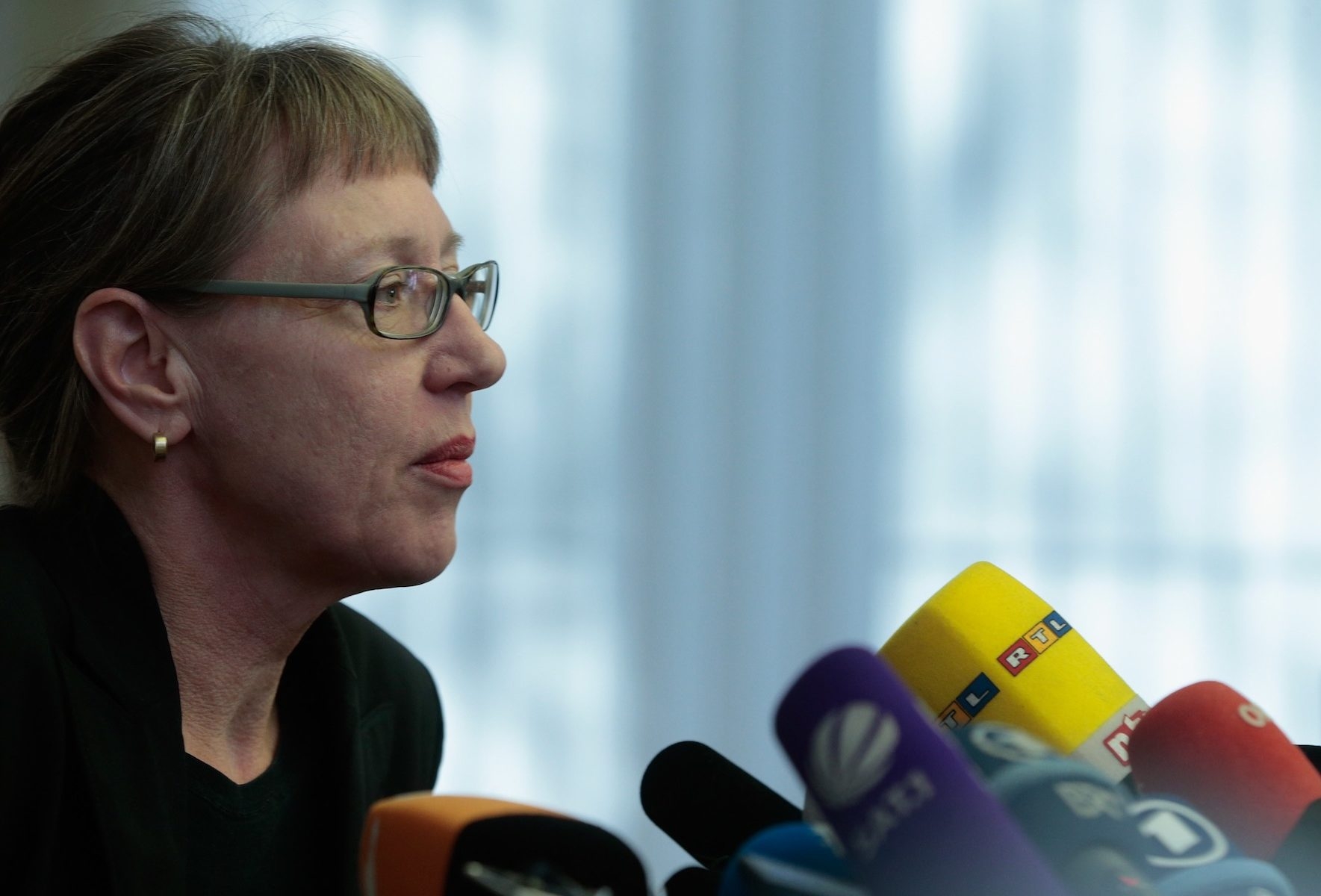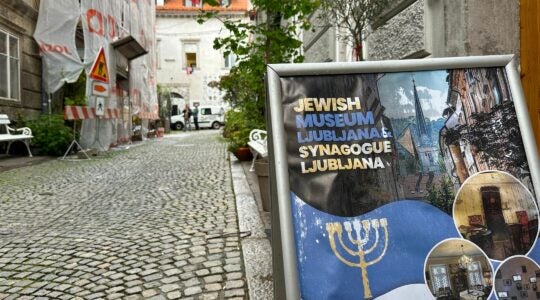BERLIN (JTA) — The extraordinary disclosure last week that a trove of more than 1,400 vanished artworks were found in a Munich apartment has raised more questions than it has answered.
What were these works, which were produced by masters such as Chagall, Matisse and Picasso? Who are their rightful owners? And where is Cornelius Gurlitt, the son of a Holocaust-era art dealer in whose apartment they were found?
Responding to growing international pressure, German authorities have begun to offer some preliminary answers.
This week, the state prosecutor in Augsburg started to put names and images of the works into a database run by Germany’s central office for lost cultural property, whose website promptly crashed due to an overload of requests.
Authorities also have confirmed that the collection contains at least 380 works that the Nazis confiscated during a 1937 campaign against so-called “degenerate art.”
Still, much remains unclear about the provenance of the works and how they came to be stored in Gurlitt’s apartment.
The case has unfolded like a suspense novel. On Sept. 22, 2010, customs agents searching for tax evaders on a night train from Zurich to Munich caught Gurlitt with 9,000 euros, just under the legal limit. Suspecting him of tax evasion and embezzlement, investigators were intrigued to find no record of Gurlitt ever working, paying taxes or receiving Social Security.
On Feb. 28, 2012, customs investigators carried out a search and seizure order of his apartment. Over three days, they carted off more than 1,400 works of art — many by artists banned by the Nazis, some of which were unknown to experts.
The seizure was kept secret until last week, when it was revealed by the German magazine Focus. Since then, it has been the talk of the nation.
“My reaction was ‘wow. Really wow!’ ” said Hannah Lessing, the secretary general of two Austrian government funds for Nazi victims who has worked to help heirs recover stolen art. “Maybe [now] there will be some people who inherited a whole house from their grandparents … and maybe they will ask themselves ‘where did this art come from?’ ”
The Munich find is by far the most significant discovery of Holocaust-era artwork, pieces of which occasionally surface over the years in auction houses, vaults and even abandoned cellars. In 2010 in Berlin, workers excavating a subway tunnel unearthed a stash of sculptures by artists disliked by the Nazis.
Meanwhile, European governments have made significant progress in identifying seized Holocaust art. In Austria, nearly 20,000 artworks and cultural items held in state collections have been returned to their original owners since the 1990s. In Holland, the Restitution Commission recommended in favor of the claimants of 430 objects, which fetched more than $10 million when they were sold at auction in 2007. And in France, a government probe of 2,000 paintings resulted in the restitution of six paintings in March to Thomas Selldorff, 84, of Boston.
“More artwork has been coming on the market as people die and their heirs try to sell it off,” said Wesley Fisher, director of research at the Conference of Jewish Material Claims Against Germany. “But there’s been nothing as spectacular as this.”
Gurlitt’s father, Hildebrand, was a German art dealer well known to restitution campaigners. Among other things, he was hired to procure works for the so-called Fuhrer Museum in Linz, Austria, and he was sent to Paris 10 times between 1941 and 1944 to purchase art on its behalf, according to a sworn statement Hildebrand Gurlitt provided to U.S. authorities in June 1945.
The elder Gurlitt also was used to scour markets for sellable art that could bring in money to the German treasury. In his statement, Hildebrand Gurlitt said he had heard about art and furnishings confiscated from Jews and held in a Parisian palace, but insisted he had never seen it. Nor, the elder Gurlitt said, had he ever bought anything from someone who did not want to sell.
In 1950, the United States returned “a whole bunch of art” to Hildebrand Gurlitt, according to Willi Korte, a Washington-based researcher for the Holocaust Art Restitution Project who, along with a fellow investigator Marc Masurovsky, dug up an inventory of the elder Gurlitt’s collection compiled by the U.S. military at the National Archives in Washington.
Fisher is combing through the inventory of works taken from the Jeu de Paume museum in Paris between 1940 and 1944. The museum was used as a repository for works looted by the Nazis from French and Belgian Jews. According to The New York Times, at least eight of the paintings that the U.S. military returned to Hildebrand Gurlitt had been stolen and stored there.
Cornelius Gurlitt apparently sold off pieces of his father’s collection occasionally and lived off the proceeds. In 2011, he sold a work by Max Beckmann, “The Lion Tamer,” that brought in more than $1 million. At a news conference Nov. 5, prosecutors said they did not know the whereabouts of Gurlitt.
On Saturday, the website Paris Match published a picture of a man it identified as Cornelius Gurlitt and claimed he was still in Munich.
His collection is being held at a customs warehouse at an undisclosed location, where it is being cataloged by art historian Meike Hoffmann of Berlin’s Free University.
A task force of six experts will assist in the provenance search, it was announced this week. The move comes after pressure from Jewish groups and restitution advocates who were troubled that the Germans had not made the full list public.
“The process is “both literally and legally complicated, difficult and time consuming,” the office of the chief public prosecutor in Augsburg said at a news conference.
Jewish groups and restitution advocates had criticized Germany’s initial sluggishness in publicizing the contents of the collection. Deidre Berger, the head of the American Jewish Committee office in Berlin, had called on Germany to move quickly to address the ownership question and welcomed this week’s developments.
“Valuable time has been wasted,” World Jewish Congress President Ronald Lauder told the magazine Die Welt this week. “Neither the possible claimants nor possible witnesses in the return process are getting any younger.”
Fisher of the Claims Conference said he found the delay outrageous, yet he acknowledged that “legal aspects” of the case make some delay inevitable.
“Evidently the Germans are afraid they will get lots of claims, and maybe some of them false,” he said. “But that comes with the territory.”
Anne Webber, director of the London-based Central Registry of Information on Looted Cultural Property, said her office has “been inundated with requests from families all over the world asking if their lost works of art might be in this collection.”
At least one family reportedly has submitted a claim already.
Marianne Rosenberg, an American attorney and granddaughter of the French dealer Paul Rosenberg, identified a Matisse unveiled at the news conference as belonging to her family.
With the decision to gradually publish the list of works, heirs now have a good chance of starting legal proceedings. Ultimately, courts will have to decide whether works in question were obtained legally, were stolen or were purchased at deflated prices from sellers under duress.
“Those who think we are at the end of this, that we shouldn’t make such a big deal about it,” said Korte, “they don’t have any fricking idea what they are talking about.”
(JTA’s Cnaan Liphshiz contributed to this report.)
JTA has documented Jewish history in real-time for over a century. Keep our journalism strong by joining us in supporting independent, award-winning reporting.






